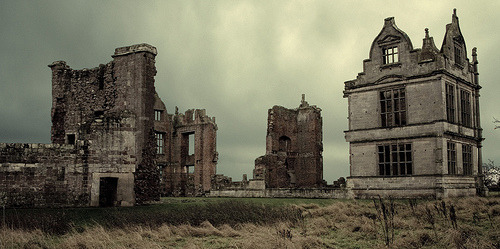Visiting graveyards/cemeteries is an undeniable staple of a Dark Tourist's diet. I like to visit cemeteries because they are tranquil and offer peace from often busy schedules. The beautifully stylised monuments and headstones are particularly pleasing to read. The Historian inside of me enjoys pondering the lives of those interred within the earthy vaults below the moss and fauna.
It is no surprise then, that when my Husband and I decided to go to Rome for our Honeymoon, we would pay a visit to the 300 year old Non-Catholic Cemetery.
The Cemetery is most notable for containing the ashes of the English Poet Percy Bysshe Shelley (1792-1822) and his contemporary, the English Poet John Keats (1795-1821). Burials began during the 18th Century and were mainly for European Upper-Class young men whom had embarked upon the 'Grand Tour' of Europe and found themselves at the mercy of the Grim Reaper.
Graves and monuments sprung up next to the 'Piramide' of Gaius Cestius, a colossal pyramid tomb for the Roman Magistrate and sometime Priest, Gaius Cestius. In 1818, Percy Bysshe Shelley described the area as, '... a green slope near the walls, under the pyramid tomb of Cestius and, as I think, the most beautiful and solemn cemetery I have ever beheld.'
Visiting the Non-Catholic Cemetery was the highlight of my trip. I can't quite decide which area of it was my favourite - every inch of it fulfilled the Romantic ideal of eternal sleep in a flower-adorned meadow underneath the beautiful Italian sun. As well as the graves of Shelley and Keats, there is one other grave that deserves a mention.
William Wetmore Story's Angel of Grief (1894) is the most spectacular monument in a cemetery/graveyard I have ever seen. A monument for his wife, Emelyn, the Angel of Grief is a testament to bereavement. The angel is slumped over the gravestone, her hands covering her face in a painfully emotive posture. Story's creation is one of the most visited graves in the cemetery and it is world famous (having appeared upon many 'Goth' bands album covers, most notable the Evanescence EP from 1998). Shoutout to the film American Beauty - THIS is the most beautiful thing in the world!
Myself and Percy Bysshe Shelley's grave containing his ashes but not his heart. Contemporary reports suggest that his heart did not burn upon his cremation so his wife, Mary Shelley (author of Frankenstein) kept his heart wrapped in his poetry in her desk. It is buried with the Shelley's son at St Peter's Church, Bournemouth.
Arguably one of the prettiest graves is that of poet John Keats. In accordance with Keats' wishes, the headstone is not marked with his name, but that of a 'Young English Poet'. The painter and Keats' close friend, Joseph Severn is buried next to him. Severn nursed Keats through his final moments of Tuberculosis.
My Dark Travels Rating - 10/10
It is very hard to describe the beauty of this cemetery. When wondering around, I was in awe of what lay before me. The landscaping is pleasant, tranquil and it is very well taken care of. The headstones, the memorials and the sculptures here are a stunning and sobering reminder of our own mortality. The cemetery even has resident cats! Graves, Poets, Cats & Sunshine - what more could you possibly want in life?!
The cemetery is FREE to visit, but a donation of 3€ is customary (unless you are as overwhelmed as I was and then you can put as much as you want in! I think I put in a 20€ donation as well as buying one of their many books in the well-stocked information centre! It was too fabulous!) You can also become a Friend of the Cemetery HERE.
DT x















